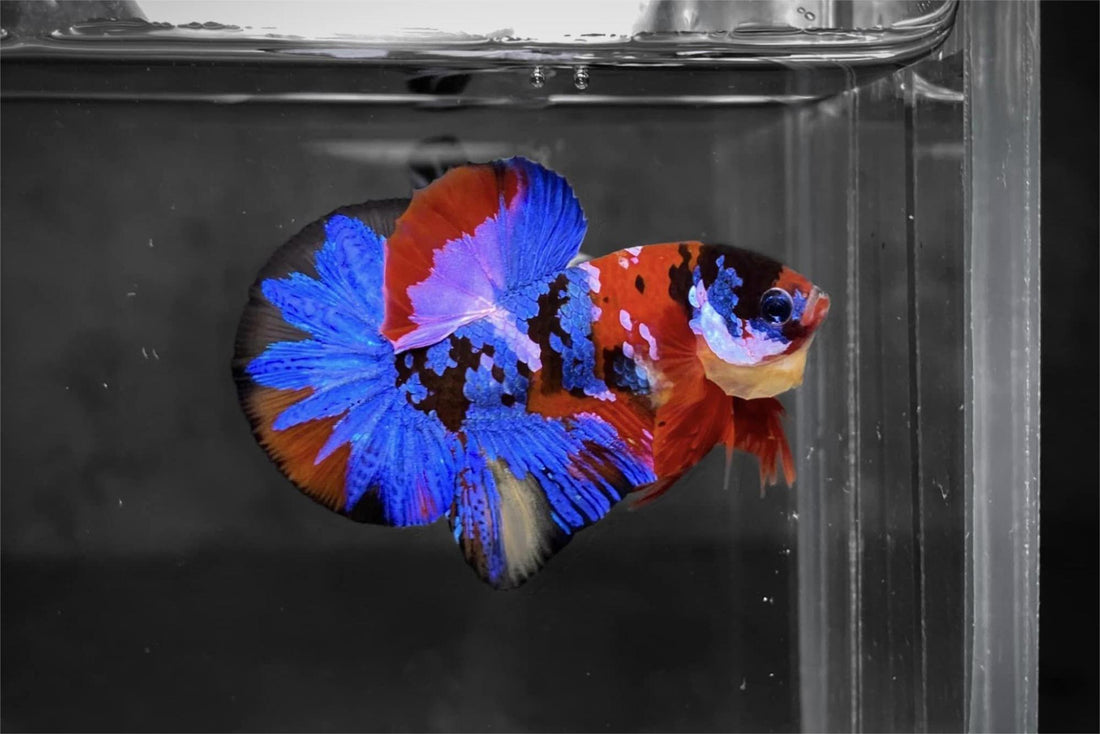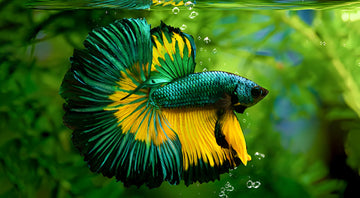What is The Best Betta Fish Temperature for Them to Thrive?

Contents
- 1- The Tropical Origins of Betta Fish
- 2- Why Temperature Matters So Much for Bettas
- 3- The Seasonal Balancing Act
- 4- Seasonal Adjustments for Betta Fish Temperature
- 5- How To Keep Betta Fish Tank at the Ideal Temperature?
- 6- Tips for Maintaining the Ideal Betta Fish Temperature
- 7- More Tips and Guides from Tropicflow
Bettas may be small, but they're big on personality. With their flowing fins and brilliant colors, these little fish are true showstoppers. But behind their stunning good looks, bettas have some very specific environmental needs if you want them to truly thrive in a home aquarium.
As tropical fish naturally found in the warm waters of Southeast Asia, nailing that perfect temperature range is absolutely crucial for a betta's health and happiness. These sensitive little guys are highly attuned to their surroundings, so getting the water temp just right is a must.
The Tropical Origins of Betta Fish
Betta fish, also known as Siamese fighting fish, aren’t just found in tanks and bowls at home. They originally hail from the cozy waters of Southeast Asia - think Thailand, Cambodia, Vietnam, and other warm spots.

Betta fish thrive in warm tropical waters
Over many years, bettas have made their homes in places like shallow rice fields, calm ponds, and slow-flowing creeks. These spots are just right for bettas, with steady warm temperatures and plenty of plants around – it’s the ideal hangout for them to flourish.
Why Temperature Matters So Much for Bettas
So, what is the ideal temperature for betta fish? The optimal range is between 76°F and 80°F (24°C to 27°C). This range mimics their natural habitat and supports their physiological processes.
When the temperature dips below 76°F, bettas tend to slow down, their colors fade, and they’re more likely to catch something nasty. On the flip side, temperatures above 82°F can cause serious stress and even be deadly.
Although betta fish can tolerate temperatures ranging between 72-86º F (22-30º C), if the water is outside of their ideal range, they’re just surviving — not thriving.
The Seasonal Balancing Act
When winter's sets in, household temperatures can easily cause tank water to dip below that cozy 76-82°F zone. Then summer rolls around and direct sunlight beats down, risking overheating the tank above 82°F.
As aquarium owners, we have to play amateur climatologist year-round to keep our bettas happy. Maintaining that perfect tropical temperature means constantly monitoring and adjusting with heaters, chillers, insulation - whatever it takes!

Change in season temperature can have major effects on your betta’s health
Seasonal Adjustments for Betta Fish Temperature
Spring
|
Fall
|
Summer
|
Winter
|
How To Keep Betta Fish Tank at the Ideal Temperature?
Keeping your betta fish at that perfect tropical temperature is absolutely vital for their health and happiness.
Room temperature water just won't cut it, especially during cooler months when household temps drop so you might want to invest into a few things:
- Adjustable aquarium heater to keep water consistently.
- Thermometer for temperature checks.
- Insulated tank cover to help prevent heat loss.
- Water circulation system to help evenly distribute the heat.
Tips for Maintaining the Ideal Betta Fish Temperature

Balancing temperature for your betta fish is a tough but rewarding task
Here are some tips to help you nail the perfect temperature:
Choosing the Right Heater
When it comes to keeping your betta's water toasty, investing in a reliable aquarium heater is key.
Look for one with adjustable settings and a built-in thermostat - that way, you can dial in the perfect temp and the heater will kick on automatically to maintain it.
Submersible heaters are often the way to go, as they're easy to install and do their job consistently.
Thermometer Placement
A high-quality aquarium thermometer is an absolute must for monitoring the water temperature.
Place it on the opposite side of the tank from the heater to get an accurate reading of the overall temp.
Digital thermometers with probes are the way to go - they're super accurate and a breeze to read.
Tank Size and Heater Wattage
The size of your tank and the wattage of your heater are interdependent. A general rule of thumb is to use 3-5 watts of heater power per gallon of water.
For example, a 10-gallon tank would require a 30-50 watt heater.
Ensuring the correct wattage will help maintain a stable temperature without overworking the heater.
Consistent Monitoring and Adjustments
Regularly check the water temperature to make sure it's staying in the optimal range for your betta.
If you need to make adjustments to the heater settings, do it gradually, especially during seasonal changes when room temps may fluctuate. Sudden temperature changes are a big no-no, as they can really stress your fish out.
Use of a Tank Lid
Using a tank lid is a great way to help maintain a stable temperature by reducing heat loss and preventing fluctuations. Plus, it keeps your curious betta from jumping out and taking a leap of faith.
Avoid Direct Sunlight
Placing the tank in direct sunlight can cause temperature spikes and algae growth. Position it in a spot with indirect light, away from heat sources like radiators or air vents.
Go Slow with Water Changes
When you're doing water changes, make sure the new water is at the same temperature as the tank water. Gradual changes help prevent sudden temperature shifts that can stress your betta.
Have a Backup Plan
Having a spare heater on hand can be a real lifesaver if your primary one fails. It ensures your betta's environment stays stable, even in emergencies. Better safe than sorry!
More Tips and Guides from Tropicflow
At the end of the day, keeping the water temperature just right is absolutely crucial for the health and happiness of your betta fish in a home aquarium.
These little guys are super sensitive to fluctuations, so it's important to follow the guidelines we've laid out to maintain a stable and consistent temperature for your aquatic friend.
If you're looking for more guides and tips on caring for your betta, be sure to check out the blogs over at Tropicflow.
No comments











0 comments